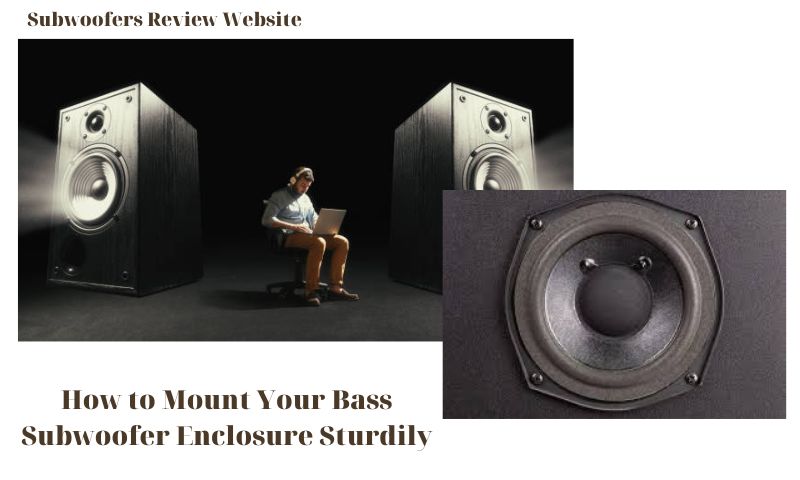Are you prepared to see the might of deep bass? With a few easy steps on How To Build A Subwoofer Box For Deep Bass, you can control your excitement and start rocking your subwoofer box for deep bass.
A ported enclosure, which is expertly tuned for the low bass frequencies, is the greatest subwoofer box design for deep bass. This SUB-BOX may be put together quickly and easily with wood glue, MDF boards, and screws. The subwoofer, port vent, and termination cup must then be mounted. Designing a subwoofer box for deep bass involves paying close attention to details like head unit performance, positioning, tuning, and subwoofer size and power.
At subwoofersreview.com, prepare to rock with deep, rich bass by using our comprehensive guide to building a subwoofer box, which includes mounting advice, sound-tweaking advice, and amplifier setup advice.
How To Build A Subwoofer Box For Deep Bass

We’ll go through how to construct a ported subwoofer box in this section because it produces the deepest bass. As soon as you get the subwoofer box measurements mentioned above, you may begin collecting these components.
- The subwoofer and mounting attachments are the materials.
- The terminal cup of the subwoofer
- MFK Board
- A jig saw for the curved cuts and a table saw or circ saw for the straight cuts
- Wooden glue
- Pencil with a ruler
- Drill
- Cover cloth for subwoofers and grill cloth
- Screws Compass
- Timber clamps
- Sandpaper
- Silicone caulk
Instructions on How To Build A Subwoofer Box For Deep Bass
- For the specifications or requirements of your subwoofer, cut the MDF board to the appropriate size.
- Mark the holes utilizing a pencil and a ruler.
- Make the screw holes with a drill.
- Apply to the MDF boards’ edges where they will contact other boards.
- The wood pieces are screwed together. Utilize double MDF or subwoofer bracing as support for the front portion.
- For the best bass, caulk the inside seals of the subwoofer box with silicon.
- Create the cup holes for the subwoofer, port, and terminals. You’ll need a circular saw, ruler, pencil, and compass for this stage.
- File along with smoothen the aperture with sandpaper.
- Place the terminal cup, port vent, and subwoofer ports in the corresponding holes. Use adhesive to secure the port vent in place. Use the mounting screws that come with the subwoofer and the termination cup to complete the installation.
- Install the subwoofer grill cloth and, if necessary, the subwoofer box cover fabric last.
How to Mount Your Bass Subwoofer Enclosure Sturdily

To make sure your sound system is prepared to rock, it’s essential to mount your bass subwoofer enclosure securely. Before beginning, make sure you have the equipment and supplies needed to place your subwoofer box safely.
Finding a suitable location to attach your bass subwoofer enclosure is the first step. Make that the enclosure’s level and weight can be supported by the mounting surface. To avoid any problems with clearance or ventilation, make sure the area around the enclosure is large enough.
You must secure your enclosure once you have found an appropriate location to mount it. This can be accomplished by either building support brackets for your subwoofer box or by using straps and ratchet belts.
Make sure your brackets are made of durable materials, like wood, steel, or aluminum, and that they are firmly fastened to the mounting surface.
If you’re using straps or just ratchet belts, be sure they are secure and sturdy enough to support the enclosure’s weight.
Finally, you must set up your amplifier so that it works with your subwoofer box. The subwoofer box’s inputs can be connected to the outputs of the amplifier to accomplish this.
Before making any connections, make sure the amplifier, as well as the subwoofer box, are off and that the connections are snug and secure.
Testing and Tuning: Improving Sound Quality
Here are some suggestions to assist you know How To Build A Subwoofer Box For Deep Bass easily.
- Adjust the Gain and Crossover Frequency: To get the most well-rounded bass sound from your subwoofer, tweak the gain and crossover settings.
- Try out several genres of music: To be sure your subwoofer is delivering the finest bass quality for all genres of music, try playing a variety of songs.
- Check the Power Handling of Your Subwoofer: Check to make sure your Subwoofer is not overdriven, as this can lead to distortion and poor bass performance.
- Check Your Enclosure’s Venting: If your enclosure has ports, make sure the vent’s sound waves aren’t obstructed or muddled.
- Pay attention to any buzzes or rattles: You might need to tweak the mounting brackets as well as rethink your deep bass box design if you hear any buzzes or rattles.
FAQs about How To Build A Subwoofer Box For Deep Bass
Is it less expensive to buy or build a bass subwoofer box?
It varies. While purchasing a bass subwoofer box is easier and frequently less expensive, building one needs time, effort, and resources. When choosing, it’s best to take your needs and financial situation into account.
Which Amplifier Type Should I Use to Power a Bass Subwoofer Box?
For the greatest results, a powerful amplifier with low pass, and bass boost filters would be beneficial. Make sure the power output of your amplifier does not outweigh the maximum power rating of your bass subwoofer box. This will guarantee the highest audio quality while protecting the suspension parts of your speaker.
Do Dampening Subwoofer Enclosures Better Reproduce Bass?
It is true that subwoofer enclosures with damping aid in improving bass reproduction. Subwoofer vibrations can be reduced and sound quality and accuracy increased by using dampening materials. This improves the bass experience by lowering distortion and raising the subwoofer’s power output.

